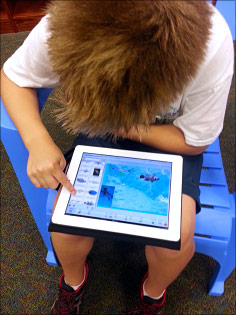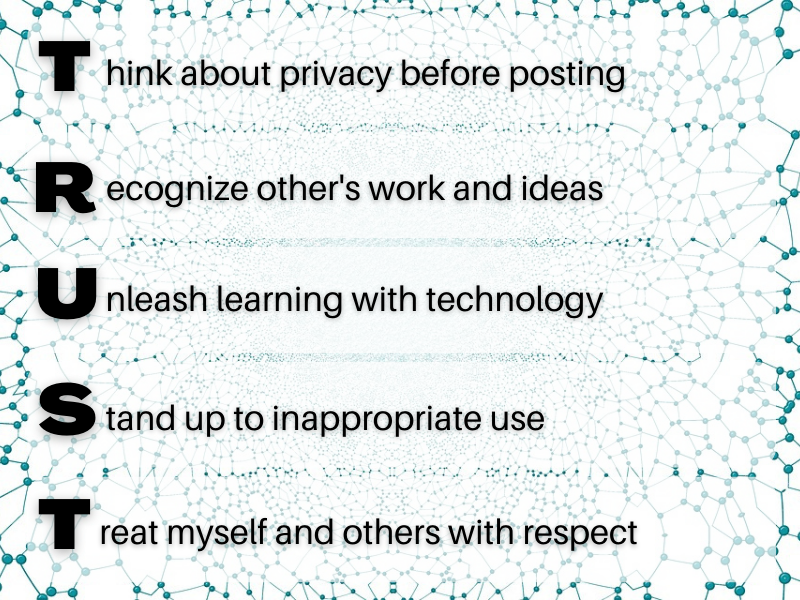
Transforming learning with BYOT

In Forsyth County Schools, students in all grade levels are encouraged to bring their own technology devices to school for new learning opportunities. This practice is called Bring Your Own Technology (BYOT), and teachers are observing that when students use personal technology tools for learning, they are achieving some positive results.
When students bring their own technology tools to school, they explore new ways to use them for learning purposes as they interact with their teachers and each other to research information, solve complex problems, create original products, and publish their work to show what they have learned. Teachers offer guidance and support, and students also provide occasional technical troubleshooting assistance to each other and their teachers.
Forsyth County Schools is recognized as a leader in the area of instructional technology and has consistently leveraged technology hardware and applications to engage student learning and facilitate digital-age skills. This vision for instructional technology contributes to the district’s reputation for high academic performance.
In addition to subscribing to high quality content and resources, FCS provides students with productivity tools and programs that promote the 4 C’s of digital-age learning: creativity, collaboration, communication, and critical thinking. A transformational shift in learning is occurring within the district due to its implementation of BYOT, as students become producers of content, rather than solely being consumers of information.

Before Forsyth County Schools began promoting BYOT, the district spent time and resources developing the technical infrastructure and wireless network within the school system. The BYOT connection within each school works like a coffee shop, and students can access the open, filtered network without having to log in.
At the onset of BYOT implementation, it seemed necessary to control the devices and applications the students were using in order to ensure their safety. There was some concern about what would happen when students brought their own technology tools to school, and the district leaned heavily on its filtered network as a measure of control.
As teachers introduced the concept of BYOT to their students, they had the students and their parents read and sign a BYOT Policy Agreement. The policy required that students only access the Internet via the filtered BYOT network, follow the district’s Acceptable Use Policy (AUP), and assume all responsibility for their technology tools when bringing them to school.
When students brought devices to school and generally used them responsibly and safely, the school system administration realized they needed to make some changes to its procedures. Recognizing that most students were trying to use their technology tools appropriately, the district removed its one-size-fits-all Acceptable Use Policy, choosing instead to empower learners with the new FCS Responsible Use Guidelines.
Instead of the 46 directives of the AUP that listed items students should not do with technology, the new Responsible Use Guidelines include 5 statements, embedded within the overarching concept of TRUST, outlining behaviors all members of the FCS community will exhibit regarding digital citizenship.

This change from acceptable use to responsible use reflects Forsyth’s goals to have consistent home-school communication and support, to provide some flexibility to local school communities, to teach digital citizenship within the context of students’ personal devices, and to embrace the growing diversity and different expectations of our learning community.
Schools and districts that encourage BYOT can help students learn how to use technology devices and social media tools safely and responsibly. First, acknowledge that students have the freedom to make choices, and then expect that students will make the right choices to benefit themselves and their instruction. Expecting that students want to make good choices creates a noticeable difference in the culture of a school as opposed to assuming that students want to break rules and use technology inappropriately.
Students are personally connected to content as they create authentic products to show what they have learned. This connection helps them to be more successful learners and encourages ingenuity and innovation within the context of their own technology tools. By bridging the divide that often exists between school-owned and personal technology tools, the BYOT program at Forsyth County Schools is extending, expanding, and enhancing learning opportunities beyond the school day.

Follow us on Instagram for daily inspiration

Create a thought web, cluster, flowchart, or other graphic organizer for a lesson
8 first projects to get students using technology
Creative, digital book reviews
Fun and powerful ideas with animated characters

Wixie
Share your ideas, imagination, and understanding through writing, art, voice, and video.

Rubric Maker
Create custom rubrics for your classroom.

Pics4Learning
A curated, copyright-friendly image library that is safe and free for education.

Wriddle
Write, record, and illustrate a sentence.

Get creative classroom ideas delivered straight to your inbox once a month.
Topics